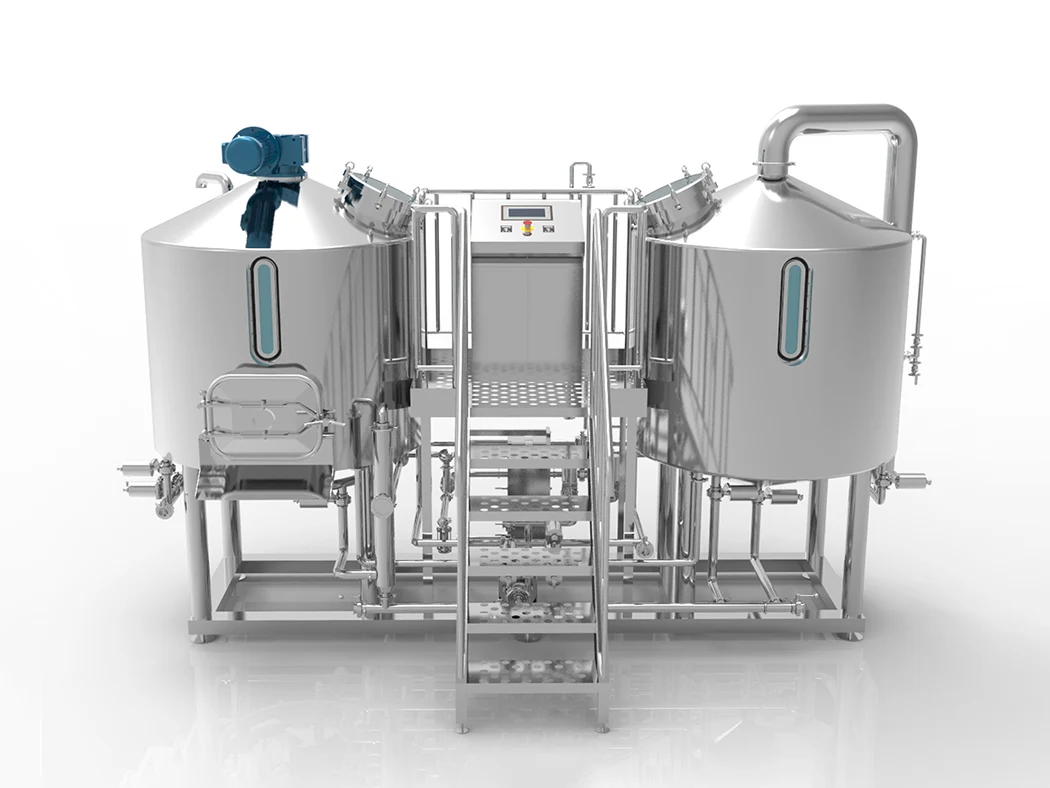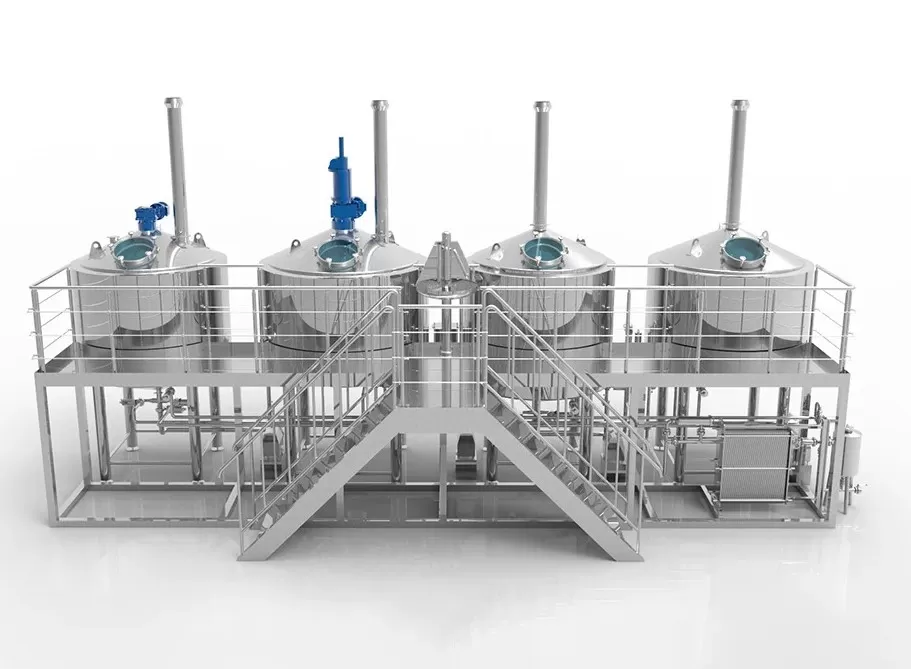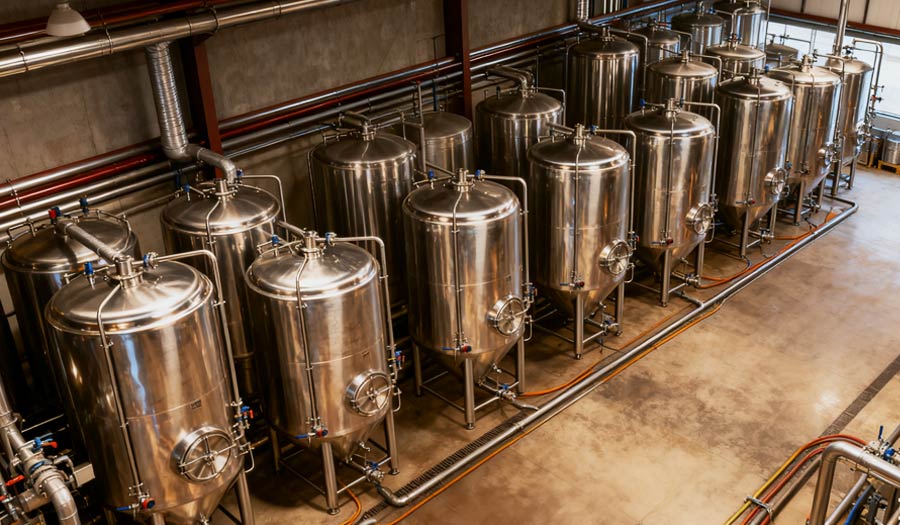With the continuous improvement of food safety standards, food enterprises are placing higher demands on hygiene and safety across all stages of production, processing, and storage. Among these, the stainless steel storage tank plays a crucial role as the primary container for storing food liquids, seasonings, dairy products, beverages, sauces, and alcoholic materials.
Compared with traditional containers such as plastic or carbon steel tanks, food-grade tanques de almacenamiento de acero inoxidable offer superior corrosion resistance, easy cleaning, non-contamination, and long service life. These features effectively prevent secondary contamination of materials and ensure food hygiene and safety. Therefore, stainless steel tanks are widely used in the food, beverage, pharmaceutical, and fermentation industries.
Main Features of Food-Grade Stainless Steel Storage Tanks
Safe and Corrosion-Resistant Materials
- 304 Stainless Steel Tank: Resistant to general acidic and alkaline environments, suitable for water, dairy products, juices, and condiments.
- 316L Stainless Steel Tank: Contains molybdenum for enhanced resistance to chloride corrosion, ideal for high-salt, acidic, or pharmaceutical environments.
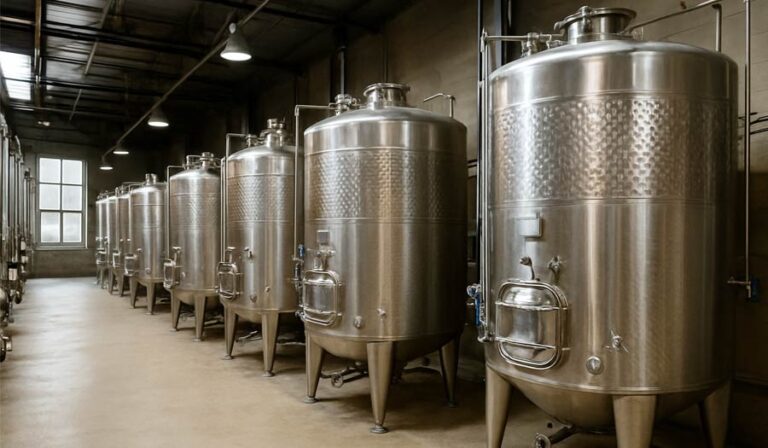
Scientific Structural Design
Typical tank structures include:
- Agitation systems to prevent sedimentation or stratification;
- Breathing valves and exhaust devices to balance internal and external pressure;
- Temperature, liquid level, and pressure monitoring systems to ensure process control.
High Sanitary Surface Standards
The inner surface of a food-grade stainless steel tank is mirror-polished (Ra ≤ 0.4 μm) to prevent material residue and bacterial growth. The exterior is also brushed or mirror-polished for both aesthetics and easy cleaning.
Easy Cleaning and Sterilization
Most stainless steel tanks are equipped with CIP (Clean-in-Place) and SIP (Sterilize-in-Place) systems, enabling automated cleaning and steam sterilization, which significantly improve hygiene and production efficiency.
Easy Cleaning and Sterilization
Most stainless steel tanks are equipped with CIP (Clean-in-Place) and SIP (Sterilize-in-Place) systems, enabling automated cleaning and steam sterilization, which significantly improve hygiene and production efficiency.
Common Types of Food-Grade Stainless Steel Tanks
Raw Material Storage Tanks
These are used for storing essential production liquids such as purified water, syrup, juice, emulsions, and flavoring liquids. Such tanks must have excellent sealing and sanitary performance to prevent contamination from air impurities or microorganisms. Typically made from 304 or 316L stainless steel, the interior surface is mirror-polished to prevent residue buildup. Additional features like level gauges, temperature probes, and breathing valves ensure safe and stable storage.
Tanques de fermentación
Tanques de fermentación are among the most technically demanding stainless steel tanks, used for producing beverages like yogurt, beer, soy sauce, and vinegar. They require precise temperature and agitation control to maintain an optimal fermentation environment. Usually designed with double or triple layers, the jacket allows hot or cold water circulation for temperature regulation. The internal surface roughness (Ra ≤ 0.4 μm) ensures hygiene and easy cleaning.
Finished Product Storage Tanks
At the final stage of food production, finished liquids (such as juices, dairy products, sauces, and beverages) are temporarily stored in finished product tanks before filling. These tanks emphasize sterility and contamination prevention. They are equipped with air filters and pressure protection valves, and feature CIP and SIP systems for automatic cleaning and sterilization. In advanced production lines, they connect directly to filling systems to achieve fully enclosed transport.
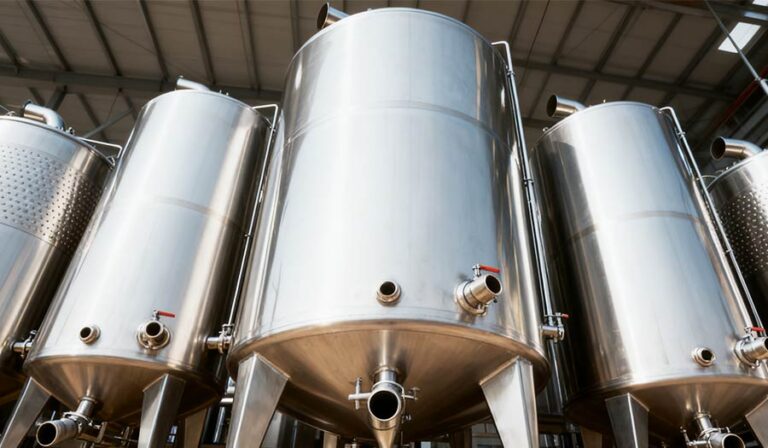
Mixing / Blending Tanks
Mixing or blending tanks are used in beverage, dairy, and condiment production to mix multiple ingredients uniformly. These tanks are equipped with adjustable-speed agitators and may include heating or cooling jackets to maintain temperature. Their closed design, smooth surface, and CIP cleaning capability ensure hygienic standards are met.
Insulated / Cooling Tanks
Used for temperature-sensitive materials like dairy products, juices, teas, and beer. These tanks have jackets that allow hot or cold water circulation to maintain stable internal temperatures. The outer insulation prevents heat loss and condensation. 316L stainless steel is often used for its superior corrosion and heat resistance.
CIP Cleaning Tanks
Although not used directly for storage, CIP cleaning tanks are crucial for maintaining hygiene. They hold cleaning solutions (alkali, acid, and water) used in automated cleaning and sterilization cycles. Typically made of stainless steel, these tanks enhance cleaning efficiency and reduce manual labor, essential for modern food production.
Special Function Tanks
Some processes require customized tanks, such as:
- Vacuum tanks for degassing;
- High-pressure tanks for sterilization or reactions;
- Mobile tanks with wheels for flexible small-batch production.
How to Choose the Right Food-Grade Stainless Steel Tank?
Select Material Based on Product Characteristics
- Neutral or mildly acidic liquids → 304 stainless steel;
- Saline, acidic, or chloride-rich environments → 316L stainless steel;
- High-purity water or pharmaceuticals → 316L or higher, with electrolytic polishing.
Determine Capacity and Structure
Typical capacities range from 100L to 100,000L, depending on production scale and space.Vertical tanks save space and drain easily.Horizontal tanks suit limited spaces or mobile use.
Focus on Surface Finish
A smoother surface ensures better hygiene.Inner wall roughness Ra ≤ 0.4 μm to prevent bacterial buildup.
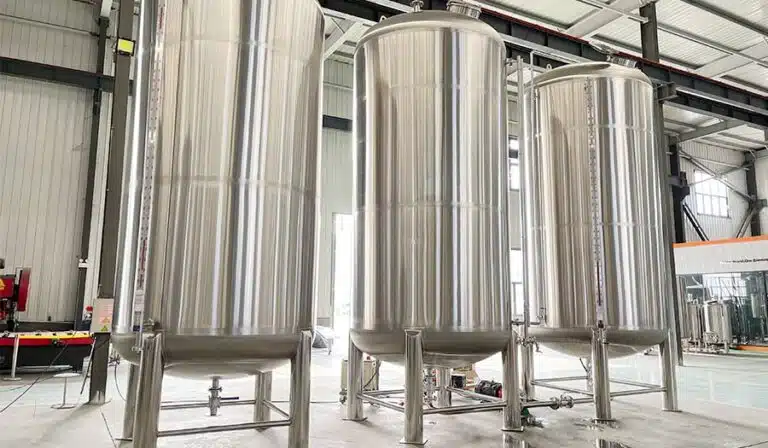
Consider Temperature Control and Agitation
For beverages and dairy, select tanks with heating/cooling jackets and agitators to maintain uniform temperature and prevent stratification.
Integrate CIP and SIP Systems
Automated cleaning and sterilization systems are standard in modern food plants, enhancing efficiency and hygiene.
Inspect Welding and Sealing Quality
Welds should be smooth and crevice-free, with acid-passivation treatment after welding. Seals should be made of food-grade silicone or PTFE.
Evaluate Manufacturer Qualification and Service
Choose manufacturers with food equipment production licenses and pressure vessel certifications for better quality assurance and after-sales support.
Usage and Maintenance Guidelines
- Regular Cleaning and Inspection: Clean promptly after use using CIP or manual methods. Inspect valves and welds regularly.
- Prevent Scratches and Corrosion: Avoid abrasive cleaning tools. If scratches or rust occur, perform passivation to restore corrosion resistance.
- Environmental Control: Place tanks in dry, ventilated areas; avoid exposure to acids or harsh chemicals.
- Maintain Valves and Seals: Check for aging or leakage periodically. Ensure motors and controls function properly.
- Proper Use and Storage: Avoid storing strong acids, alkalis, or saline liquids long-term. Clean thoroughly when switching materials.
Future Trends: Intelligence and Customization
- Intelligent Control:Future stainless steel tanks will increasingly feature sensors for temperature, pressure, and level monitoring. Through PLC systems or IoT platforms, operators can remotely view real-time data and receive automatic alerts — improving safety and efficiency.
- Automation and Data Integration:Next-generation tanks will coordinate with CIP systems, mixing units, and filling lines for full-process automation. Data logging, maintenance records, and quality traceability will further enhance food safety management.
- Custom Design Flexibility:Different industries have varying requirements. Modular and non-standard customized designs will become mainstream, allowing flexible configurations for capacity, structure, agitation, and temperature control.
- Energy Saving and Sustainability:Optimized insulation, heat recovery, and the use of recyclable materials will reduce energy consumption and carbon emissions, aligning with green manufacturing principles.
Conclusión
Whether for a small food startup or a large beverage corporation, stainless steel storage tanks are indispensable core equipment.Scientific selection, proper use, and regular maintenance significantly extend service life and ensure food hygiene.Choosing the right tank is not only about ensuring food safety, but also about building brand reputation and achieving sustainable growth.

